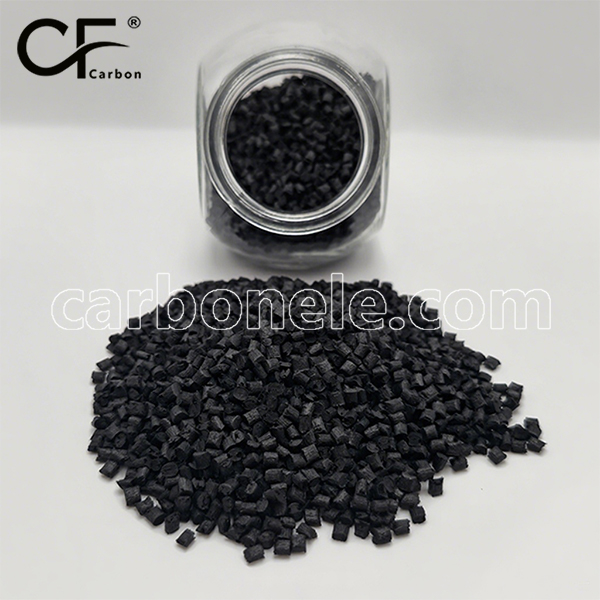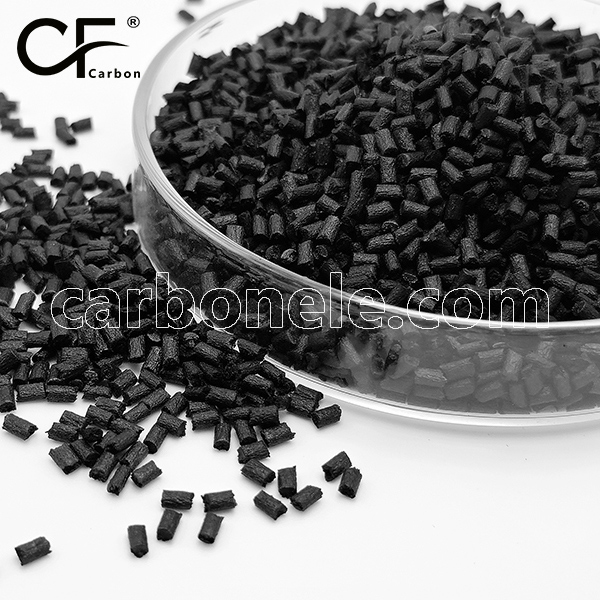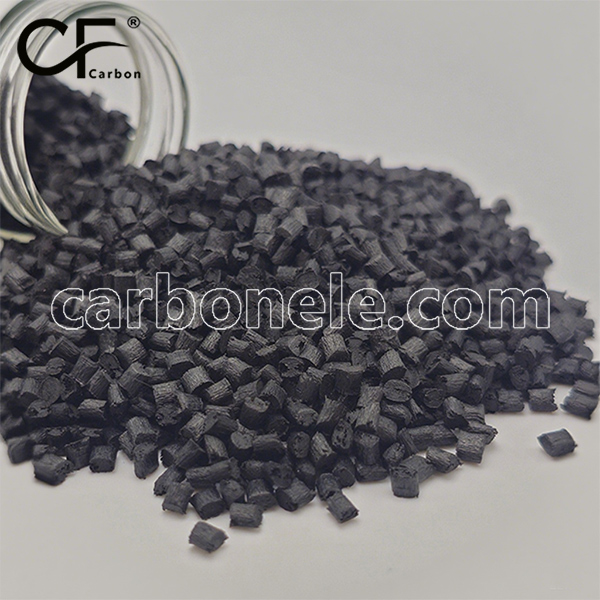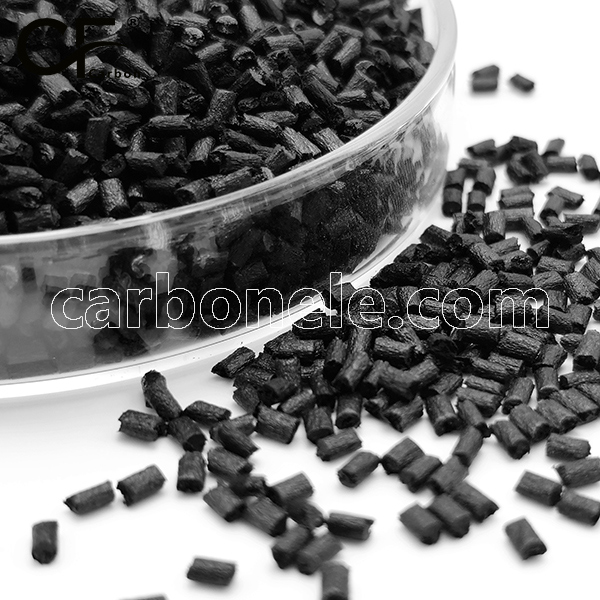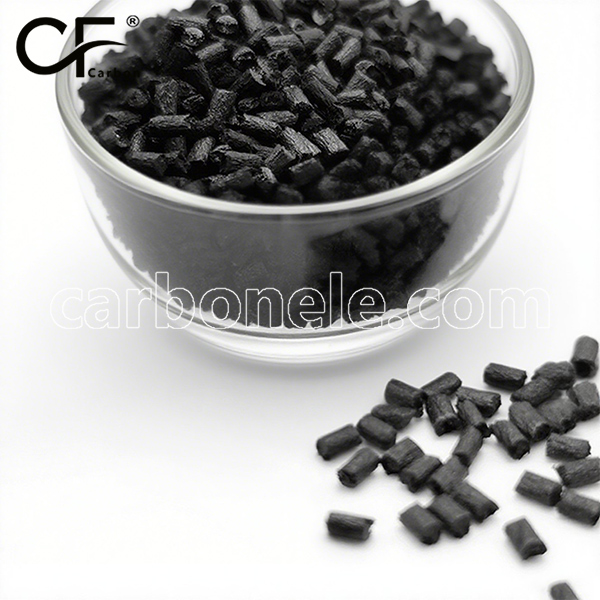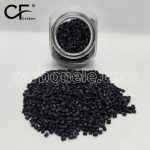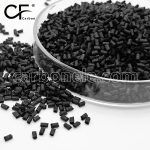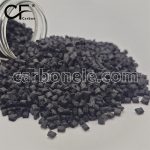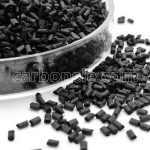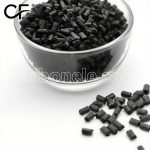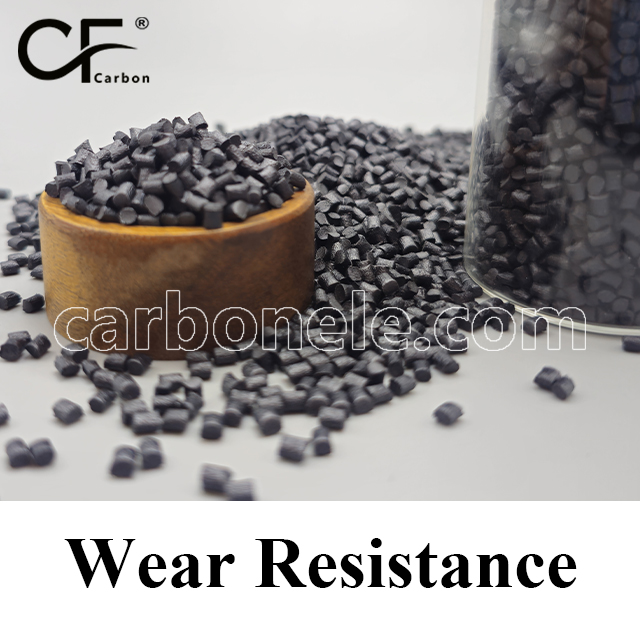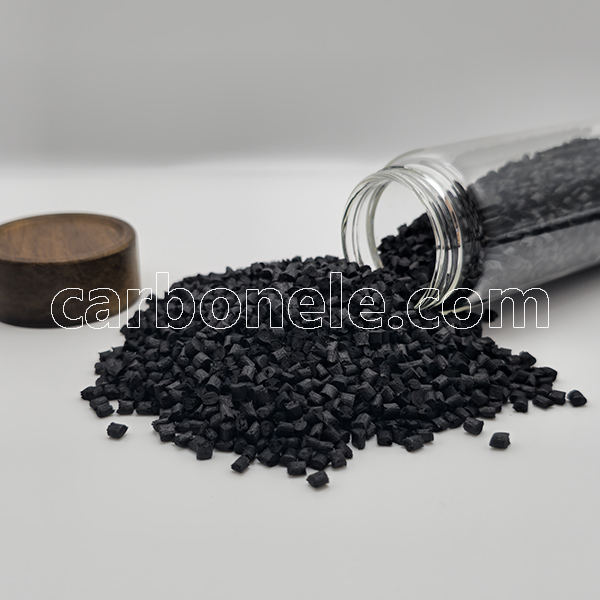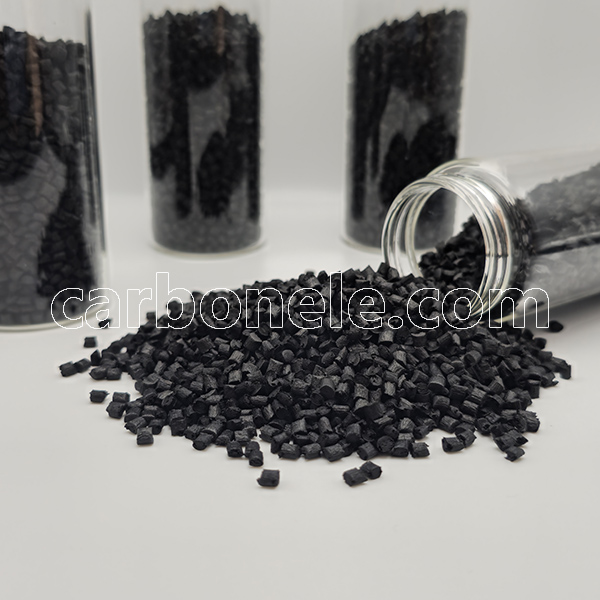The friction coefficient of PA612 (polyamide 612) is typically around 0.3 to 0.4 when sliding against steel or other metal surfaces. However, when carbon fiber is incorporated into PA612 to create PA612-CF, the friction coefficient tends to decrease due to the lubricating effect of the carbon fibers. For PA612-CF, the friction coefficient generally ranges from 0.2 to 0.3, depending on the percentage of carbon fiber reinforcement and the specific testing conditions. The addition of carbon fiber improves wear resistance and helps reduce friction, making PA612-CF more suitable for high-stress applications requiring low friction and long-term durability.

Tough PA610-CF60 Compound – Top Tools
PA610-CF60 carbon fiber nylon—ultra-strong composite for tools & industrial parts. 60% carbon fiber reinforcement for maximum durability. Request samples!
- Model number: PA610-CF-BCA6
- Matrix Resin: PA from Hexamethylene diamine and Sebacic acid (PA610)
- Reinforcing Filler: Carbon fiber
- Appearance: Granules
- Grade: Injection/extrusion grade
- Packaging: 25kgs/bag
Introduction to PA610-CF60
In the world of advanced thermoplastics, PA610-CF60 stands out as a reliable and high-strength material designed for demanding environments. It combines the chemical backbone of polyamide 610 with the reinforcement of carbon fiber to create a compound that is both tough and versatile.
Manufacturers across industries recognize PA610-CF60 as a next-generation solution that outperforms conventional plastics and offers lightweight alternatives to metals.
This material is particularly valued where durability, dimensional stability, and mechanical integrity are critical. From precision tools to heavy-duty components, it enables consistent performance even under harsh working conditions.
Why Choose PA610-CF60
Selecting the right material is fundamental in achieving product success. It provides a unique balance of strength and adaptability that makes it the preferred choice for many manufacturers. Its benefits include:
-
Long-term dimensional stability in varied environments
-
Resistance to heat, moisture, and external forces
-
High mechanical performance supported by carbon fiber reinforcement
-
Smooth surface finish suitable for precision parts
These qualities position it as a versatile material for technical tools and industrial equipment.
Application Example: Power Tool Components
One of the most effective ways to understand the value of PA610-CF60 is to look at its role in power tool manufacturing. Power tools demand strength, durability, and precise fit in their housing and internal structural parts. Traditional plastics often struggle with the intense vibration and heat generated during tool operation, while metals increase weight and cost.
PA610-CF60 offers the perfect balance:
-
Strength for Structural Integrity: The reinforced compound provides a robust framework for tool housings and handles.
-
Lightweight Advantage: Reduced weight improves user comfort, especially during long periods of operation.
-
Durability in Harsh Use: Tools exposed to repeated impact or environmental stress remain reliable when built with it.
-
Precision Fit: Consistent molding properties ensure tight tolerances for gears, casings, and locking mechanisms.
By integrating it, manufacturers achieve longer-lasting tools with improved ergonomics and user confidence.
Advantages of PA610-CF60
High Mechanical Strength
The heavy reinforcement in PA610-CF60 makes it capable of withstanding mechanical forces that would damage less robust plastics. This ensures that parts used in high-load or high-impact environments perform consistently without failure.
Lightweight and Ergonomic Benefits
Weight is an important factor in both industrial and consumer products. It allows manufacturers to design strong yet lightweight components, improving usability and energy efficiency.
Dimensional Stability
Heat, moisture, and chemical exposure often affect traditional materials, leading to warping and loss of accuracy. It preserves shape and structure, making it particularly reliable for technical applications where precision matters.
Aesthetic Surface and Finishing
Components made from PA610-CF60 not only perform well but also exhibit a refined finish. This is essential for consumer-facing products such as power tools, where design appeal complements functionality.
Broader Industrial Applications of PA610-CF60
Automotive Systems
PA610-CF60 is widely adopted in automotive engineering, especially in areas requiring lightweight yet durable solutions. Under-the-hood brackets, housings, and mechanical connectors benefit from its resilience.
Industrial Equipment
Machinery parts and tool housings gain from the toughness and dimensional stability of PA610-CF60. Its ability to handle repetitive stress cycles makes it ideal for gears, clamps, and support structures.
Sporting and Outdoor Goods
Performance-focused sporting equipment relies on strength without excessive weight. It enables designers to deliver durable products that withstand outdoor conditions while remaining user-friendly.
Consumer Tools and Devices
From gardening equipment to household tools, PA610-CF60 brings long-term reliability. It ensures that products remain dependable through repeated use, building customer trust in brand quality.
Design Benefits of PA610-CF60
Flexibility in Manufacturing
It is highly compatible with injection molding, allowing the production of complex designs with integrated features. Engineers can reduce assembly requirements by combining multiple functions into a single part.
Consistency Across Production
The material flows evenly during processing, ensuring minimal defects and predictable results. This enhances efficiency and reduces waste during manufacturing.
Balance of Aesthetics and Function
With a strong yet refined surface finish, PA610-CF60 delivers components that meet both performance and design expectations.
Sustainability with PA610-CF60
Sustainability has become a priority in material selection, and PA610-CF60 supports these initiatives. By reducing dependence on metals, it lowers production energy requirements and transportation costs. Its long lifespan also means fewer replacements, minimizing waste and supporting circular product design.
PA610-CF60 vs Conventional Materials
Compared to Metals
Metals provide strength but add weight and often require additional protective treatments. It achieves comparable toughness at a fraction of the weight, with inherent resistance to environmental degradation.
Compared to Standard Plastics
Standard plastics may lack the performance required for tools and high-stress applications. It exceeds these limitations, ensuring reliable long-term operation.
Case Example: Tool Housing Made with PA610-CF60
A manufacturer of professional-grade drills switched from a mixed metal and plastic design to a housing made entirely from PA610-CF60. The result was a tool that was lighter, easier to handle, and more durable in long-term use. Customer satisfaction improved as the product resisted cracking, warping, and excessive wear, leading to reduced maintenance and stronger market acceptance.
Customer Benefits of PA610-CF60
-
Durability: Extended product lifespans reduce replacement frequency.
-
Lightweight Design: Enhances portability and user comfort.
-
High Performance: Maintains functionality even in extreme working conditions.
-
Market Appeal: Products gain a reputation for reliability and innovation.
Future of PA610-CF60 in Industry
The versatility of PA610-CF60 ensures its relevance for future innovations. As industries prioritize performance, sustainability, and design freedom, this compound will play a growing role. In sectors ranging from industrial tools to consumer products, PA610-CF60 is shaping the next generation of material solutions.
Conclusion
PA610-CF60 demonstrates how modern composites redefine expectations for toughness, stability, and design potential. Its application in tools highlights its ability to replace metals and outperform traditional plastics, providing both functional and ergonomic advantages.
For manufacturers aiming to produce stronger, lighter, and longer-lasting products, it is more than just a compound. It is a foundation for innovation, product reliability, and long-term success across multiple industries.
If you want to get more information about PA610-CF60, you can visit our YouTube.
Strength between PA610 and PA610-CF
Compared to PA610, PA610-CF exhibits significantly higher strength. PA610 typically has a tensile strength ranging from 50-70 MPa and a flexural strength around 80-100 MPa, making it suitable for low-load applications. In contrast, PA610-CF, with 5% carbon fiber reinforcement, boosts its mechanical properties, achieving a tensile strength of 90 MPa, a flexural strength of 130 MPa, and an impact strength of 4.0 kJ/m². These improvements make PA610-CF more suitable for high-load, wear-resistant, and impact-resistant applications in demanding industrial environments.
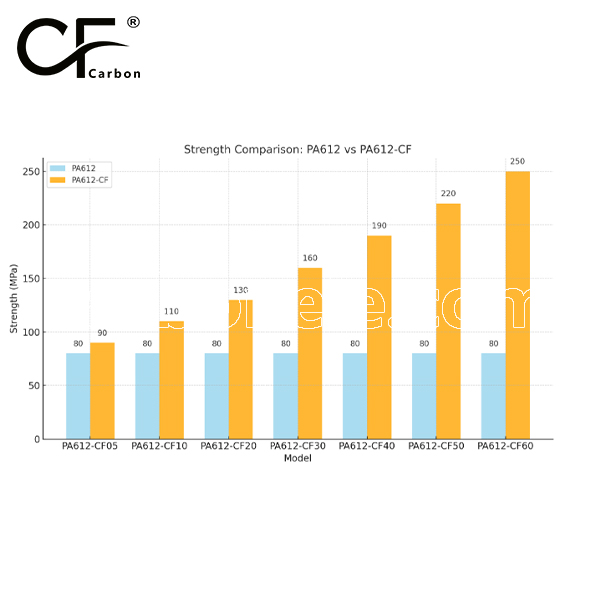


Frequently Asked Questions
Carbon (Xiamen) New Material Co., Ltd. aims to provide buyers with "one-stop" worry-free high-quality services. Here you can find all information about carbon fiber engineering plastics. If you still have questions, please send us an email for consultation!
-
How can I contact the manufacturer of a product that interests me?
When you find a product you are interested in, you can contact the manufacturer directly by sending an email and we will get back to you as soon as possible.
-
How do I find the products that interest me?
All you need to do is enter the keyword, product name in the search window and press the Enter key on your keyboard. Your search results page will then be displayed. You can also search within the product category pages on the home page. Each category is divided into subcategories, allowing you to refine your search and find products that interest you.
-
Where will I find a buying guide?
Please contact our after-sales service directly and we will provide you with a comprehensive operating guide.
-
What are CF Reinforced Thermoplastic Composites?
CF Reinforced Thermoplastic Composites are materials where carbon fibers are incorporated into a thermoplastic matrix. They combine the strength and stiffness of carbon fibers with the processability and recyclability of thermoplastics. For instance, they are used in automotive parts like bumper beams.
-
What are the benefits of CF Reinforced Thermoplastic Composites over traditional composites?
The key benefits include faster production cycles, easier recyclability, and better impact resistance. They also offer design flexibility. An example is in the manufacturing of consumer electronics casings where complex shapes can be achieved more easily.
-
How are CF Reinforced Thermoplastic Composites processed?
Common processing methods include injection molding, extrusion, and compression molding. Injection molding is widely used for mass production. For example, in the production of small components for the medical industry.
-
What industries use CF Reinforced Thermoplastic Composites?
They are utilized in aerospace, automotive, medical, and sports equipment industries. In aerospace, they can be found in interior components. In the medical field, they might be used in prosthetics.
-
How does the carbon fiber content affect the properties of the composites?
Higher carbon fiber content generally leads to increased strength and stiffness but may reduce ductility. A moderate content is often balanced for specific applications. For example, a higher content might be preferred in structural parts of a race car.
-
What are the challenges in using CF Reinforced Thermoplastic Composites?
Challenges include higher material costs, complex processing equipment requirements, and ensuring uniform fiber dispersion. Issues with adhesion between the fibers and the matrix can also arise. An example is in achieving consistent quality in large-scale production.







